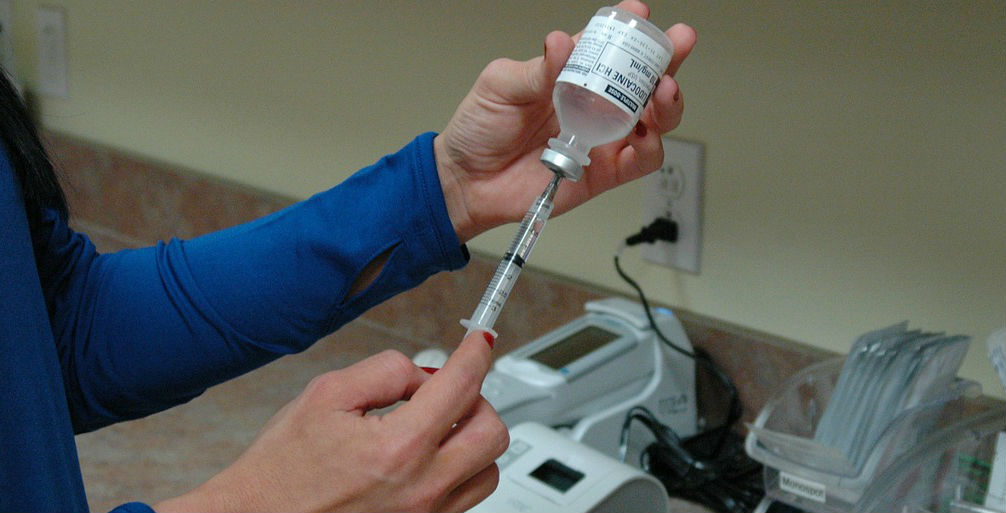
Medication errors are a common and very serious form of preventable medical mistakes. How are such errors made and how can medication mistakes be reduced? A leading hospital safety organization says it has the answers.
The Leapfrog Group is a nonprofit organization that seeks to improve the quality of U.S. healthcare. It recently released a comprehensive look at medication errors, noting that they are the most frequent medical mistake in hospitals, responsible for 7,000 patient deaths each year. “Medication Safety Report 2019” offers remedies to end these potentially fatal errors.
The report recommends a better use of technology by hospitals in order to cut the number of preventable drug errors.
Patient Allergy Medication Error
Serious medication errors include providing the wrong dosage and not noting patient allergies to some drugs or potentially harmful side effects. The Leapfrog report calls on hospitals to uniformly use computerized physician order systems as a firewall for patient harm from medication errors.
These systems can help prevent drug administration mistakes due to illegible handwriting. They can also warn caregivers against patient allergies and other prescribing errors, and provide the most current information and warnings on specific drugs.
The Leapfrog Group has a standard for a variety of patient safety measures that hospitals must meet to get the organization’s highest safety ratings. Doctors must use these computerized systems for 85 percent of drug orders for a hospital to be Leapfrog-compliant. Hospitals must also regularly test their computerized physician order systems.
Hospital Medicine Given in the Wrong Dosage
Administering the right drug to the wrong patient or the right drug in an incorrect dose are two other potentially fatal medical mistakes in hospitals. The Leapfrog Group recommends hospitals use bar code administration systems to counter them.
The systems feature ID bracelets with unique bar codes for each patient. Before a medication is administered, the patient’s bar code and the bar code on the medication are scanned to make sure they match. No match is a warning of either the wrong patient or the wrong medication.
To achieve Leapfrog’s patient safety standard for bar code medication, hospitals must:
· Scan patients and their medications prior to administration 95 percent of the time. Leapfrog specifically mentions this needs to be done in a hospital’s ICU, surgical units, and labor and delivery wing.
· Use a bar code system that warns against various medication errors, including the wrong medication; the wrong patient; wrong dose; wrong time; and patient allergies
According to the Leapfrog report, only about 45 percent of reporting hospitals fully meet the patient safety standard for bar code medication systems. Just over 60 percent of hospitals meet the computerized physician order entry systems standard.
Doctors, nurses and hospital administrators who ignore steps to prevent drug dosage mistakes should be held accountable. If you were seriously harmed or had a family member die due to what you believe was a medication error or some other type of medical mistake, contact a medical malpractice lawyer.
The choice of a lawyer is an important decision that should not be based solely on advertisements.
Authored by Gray Ritter Graham, posted in Blog April 4, 2019

 RSS Feed
RSS Feed